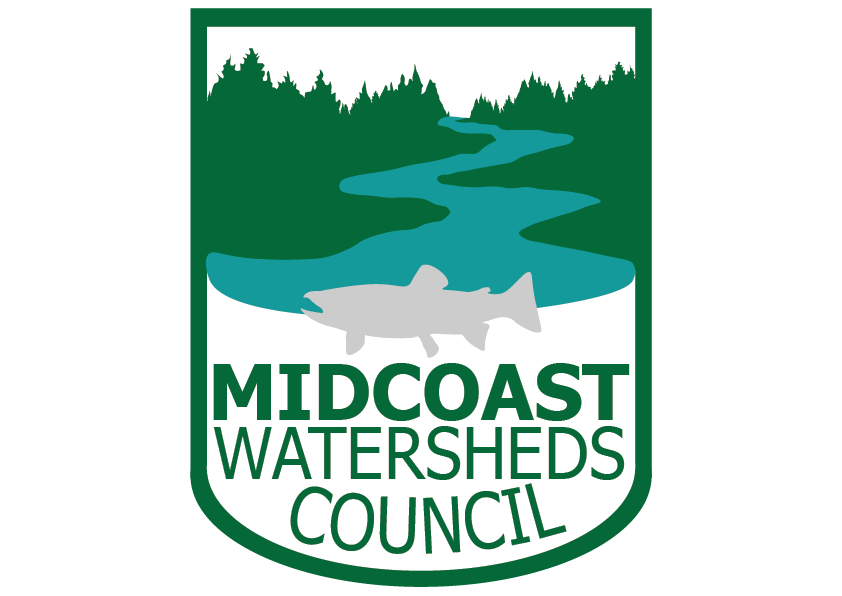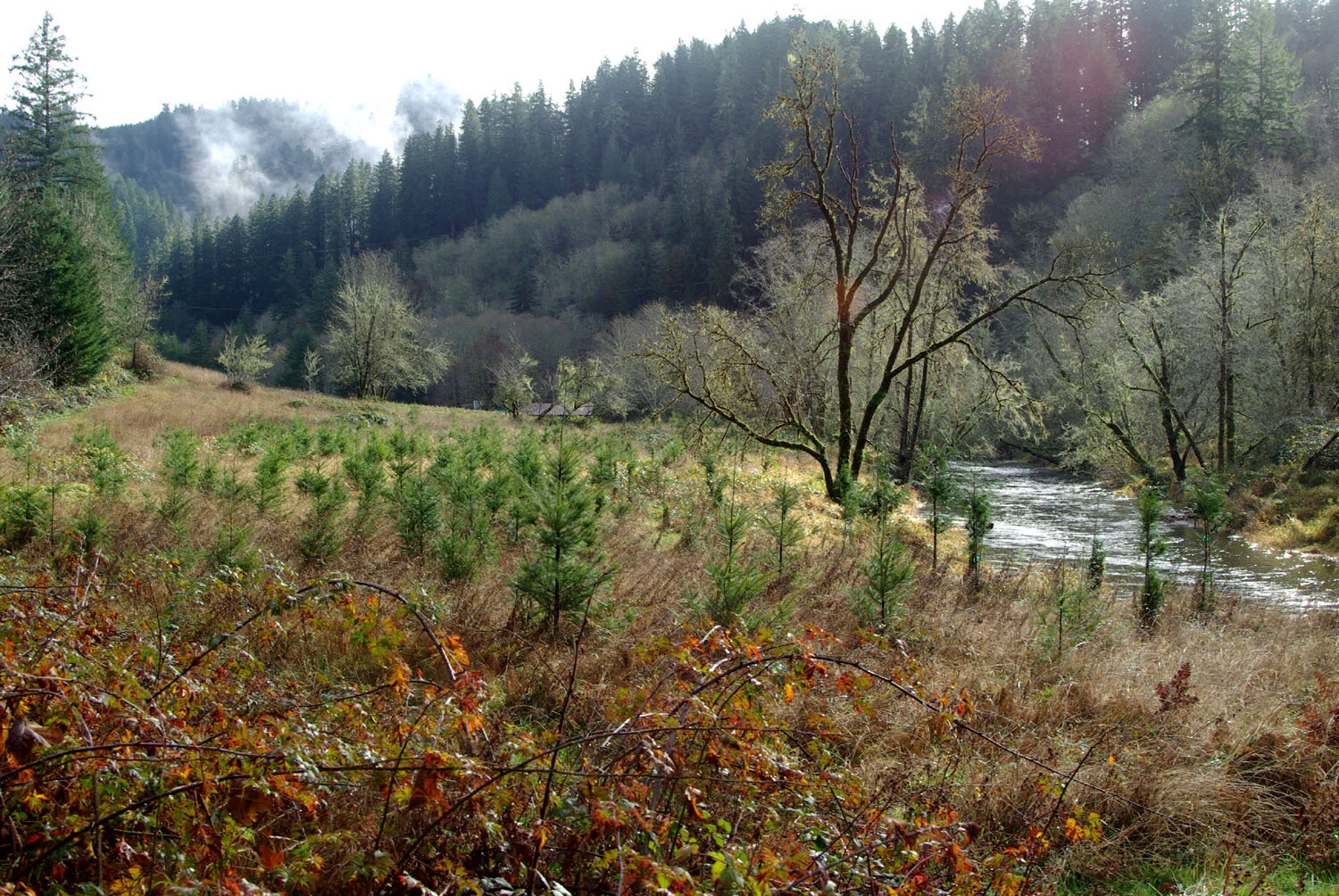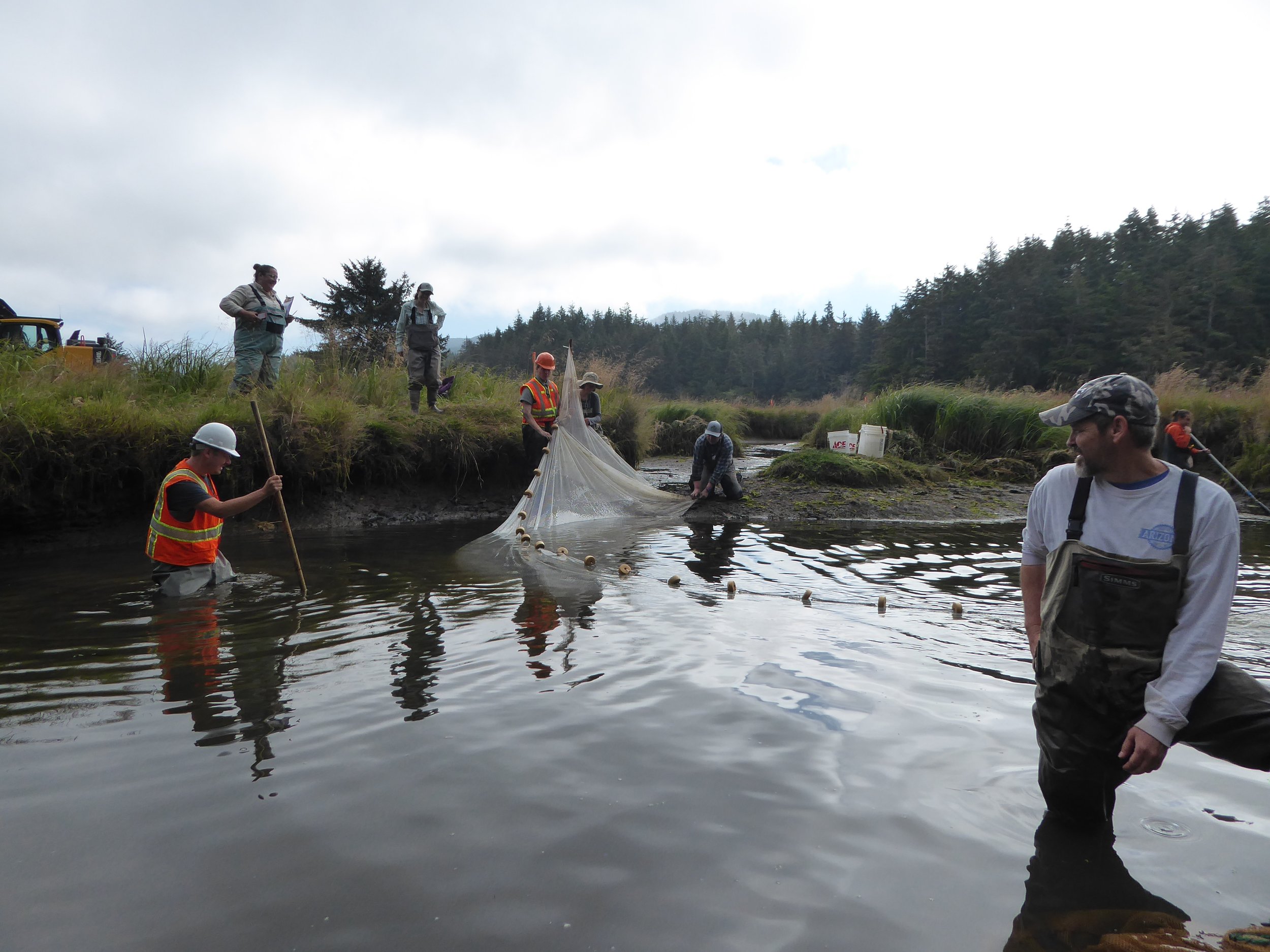Regrowing lost habitats
Drift Creek flows into the Siletz Bay just south of Lincoln City, where it forms a beautiful estuary habitat. The area is now part of the Siletz Bay National Wildlife Refuge, but the habitat has been severely degraded in the last 150 years. Several partners are restoring the wetland’s natural functions by removing tidal flow restrictions, digging new channels for the tides to flow through, and promoting native plants.
The Lower Drift project aims to restore roughly 40 acres of tidal wetlands in 2023 through the removal of dikes, restructuring and connecting of tidal channels, creating small mounds and planting native species, placement of large woody debris (LWD), and controlling invasive species. An additional 40 acres will be restored in 2024. These restoration efforts added to 86 acres of previously restored wetlands within Siletz Bay National Wildlife Refuge.
The value of estuaries’ ecosystem functions have not been prioritized in recent history. Instead, Oregon’s tidal wetlands have been diked, ditched, developed, or grazed to the point that the area of Oregon’s tidal wetlands has declined by an average of about 60%.
Once a common habitat along the Oregon Coast, forested swamps have declined by an average of roughly 95%. New research shows that forested swamps provide important ecosystem services such as shelter and foraging grounds for salmonids, multi-layered wildlife habitat and stream shading, and high levels of carbon storage in the soil.
-
Wetlands are areas where water covers the soil, or remains close to the surface all or most of the year. Both marshes and swamps are types of wetlands. Marshes are wetlands that are dominated by soft-stemmed plants such as grasses. Swamps are wetlands that are dominated by woody plants such as trees or shrubs.
A forested tidal swamp (Photo by Laura Brophy)
In addition to directly supporting the preservation of estuary wildlife, the Lower Drift project plays a part in strengthening Oregon’s coastal climate change resiliency. Estuaries have a built-in system to adapt to rising sea levels. As sediment flows into the estuaries from the tides and river, it collects in vegetation and increases the elevation of the wetlands. Estuaries are also “blue carbon” ecosystems (such as mangrove forests and seagrass beds) which are even more efficient at storing carbon from the atmosphere than tropical forests!
How?
-
Improving topographic diversity higher elevation spots for spruce and native shrubs are present.
Placing LWD to create potential nurse logs.
Planting of spruce and native shrubs and managing invasive species.
-
Removing tidal flow barriers such as old dikes, culverts, and riprap to allow for natural deposition of sediment.
Placing of LWD to aid in catching of sediment.
Creating elevation gradient to promote sediment deposition.
-
Increasing tidal channel connectivity through channel shaping and removal of tidal flow barriers.
Placing of LWD to create shelter for aquatic species and coastal birds alike.
Planting of native plants.
The first phase of the Lower Drift restoration began the summer of 2023 when stream diversion and fish salvage took place in July prior to the restructuring of tidal channels using large machinery. During fish salvage, species such as shiner perch, greenling, rockfish, gunnel, stickleback, and Coho salmon were successfully salvaged from the active work area and safely moved to habitat downstream.
Project partners include US Fish and Wildlife Service, Oregon Coast National Wildlife Refuge Complex, US Forest Service, Bureau of Land Management, private landowners, the Lincoln Soil and Water Conservation District, the Wild Salmon Center, National Oceanic and Atmospheric Administration, and the Confederated Tribes of the Siletz Indians.

















